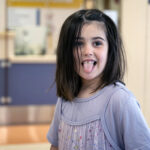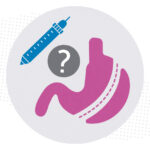I tried the keto diet to help my epilepsy and it changed my life

My name is Dennis. I’m 15 years old and live in East Greenwich, Rhode Island. Two years ago, I started the keto diet to help my epilepsy and it changed my life. Here’s my story…
I was 7 when I was diagnosed with epilepsy. I was too young to know what that really meant or understand how it made me different from other people, but I knew something was wrong. For as long as I can remember, I had a hard time finding the right words and getting my ideas across. It was like my mind was in a million different places at once.
I had seizures too, which is what most people probably think of when they hear “epilepsy.” I’d lose consciousness for anywhere from half a second to five seconds — not long enough to lose my balance or pass out, but long enough for me and people around me to notice. I never thought much about them, though; they were just something that happened sometimes.
Finding answers
My family and I came to the Epilepsy Center at Boston Children’s Hospital for help after I had tried a few medications and treatments that didn’t seem to work and had annoying side effects. We met with Dr.Jeffrey Bolton, who suggested I try the keto diet.
Keto — or the ketogenic diet — is a low-carb, high-fat diet. When the body is forced to use fat for energy due to fewer carbohydrates or sugars, ketones are produced. These ketones, which the brain can use as an alternative source of energy, have an anti-epileptic effect on the brain. This can lead to improved seizure control.
Ketosis is complicated, but Dr. Bolton explained things to me in ways I could understand. At the same time, he treated me like an adult and told me that trying keto was 100 percent my decision. He also said for the keto diet to be effective, I had to be 100 percent committed.
Keto is a low-carb, high-fat diet that puts your body into ketosis, which is when there’s a large number of ketones in your blood.
Keto is a huge change to how you eat and takes getting used to. My first two weeks were pretty brutal — it was hard to give up chips and crackers — but now I wouldn’t want to go back to how I used to eat. On a typical day, I’ll have bacon and eggs for breakfast, meat and cheese for lunch, and I’m a big fan of Caesar salad with a lot of dressing for dinner. I’ve found almonds to be a good replacement for the chips.
The team at Boston Children’s monitor me closely to make sure I’m getting the right nutrients, and they help me manage my medication, which works together with keto to help balance the neurotransmitters in my brain.
Dr. Bolton also helped me identify my triggers and how to control them as much as possible. It turns out that sleep deprivation and long hours of staring at a screen can bring on a seizure for me, so I wear blue light glasses when I’m at my computer and make sure I get enough sleep.
Clearing skies
Epilepsy kept me from experiencing a lot of typical childhood things, like sleepovers and different sports. But, having limitations also had a bright side: it sparked my interest in theater, and this year I was in a huge stage production for school. I also practice piano and paddle boarding and skiing is my biggest thing.
If I could offer advice to anyone out there who has epilepsy or anything that limits what they do or eat, it would be to always make your quality of life a priority. That may mean doing hard things. For me, that was adjusting to the keto diet. Everything is different for me now. Before, it was like I was seeing through a fog. Now the skies are clear.
Learn more about the Epilepsy Center.
Related Posts :
-

“Princess June” reigns supreme over Rasmussen syndrome
What do you call a “girly” 5-year-old who adores dolls and frilly nightgowns? If you’re one of June Pelletier’...
-

Partnering diet and intestinal microbes to protect against GI disease
Despite being an everyday necessity, nutrition is something of a black box. We know that many plant-based foods are good ...
-

Are weight-loss medications and surgery right for teens?
Advances in bariatric surgery and weight-loss medications have made weight management accessible to more adults. But are these approaches effective — ...
-

Addressing food insecurity and nutrition challenges in pediatric type 1 diabetes care
Managing type 1 diabetes can be overwhelming for children and families. As children learn to live with the disease, many cut ...





